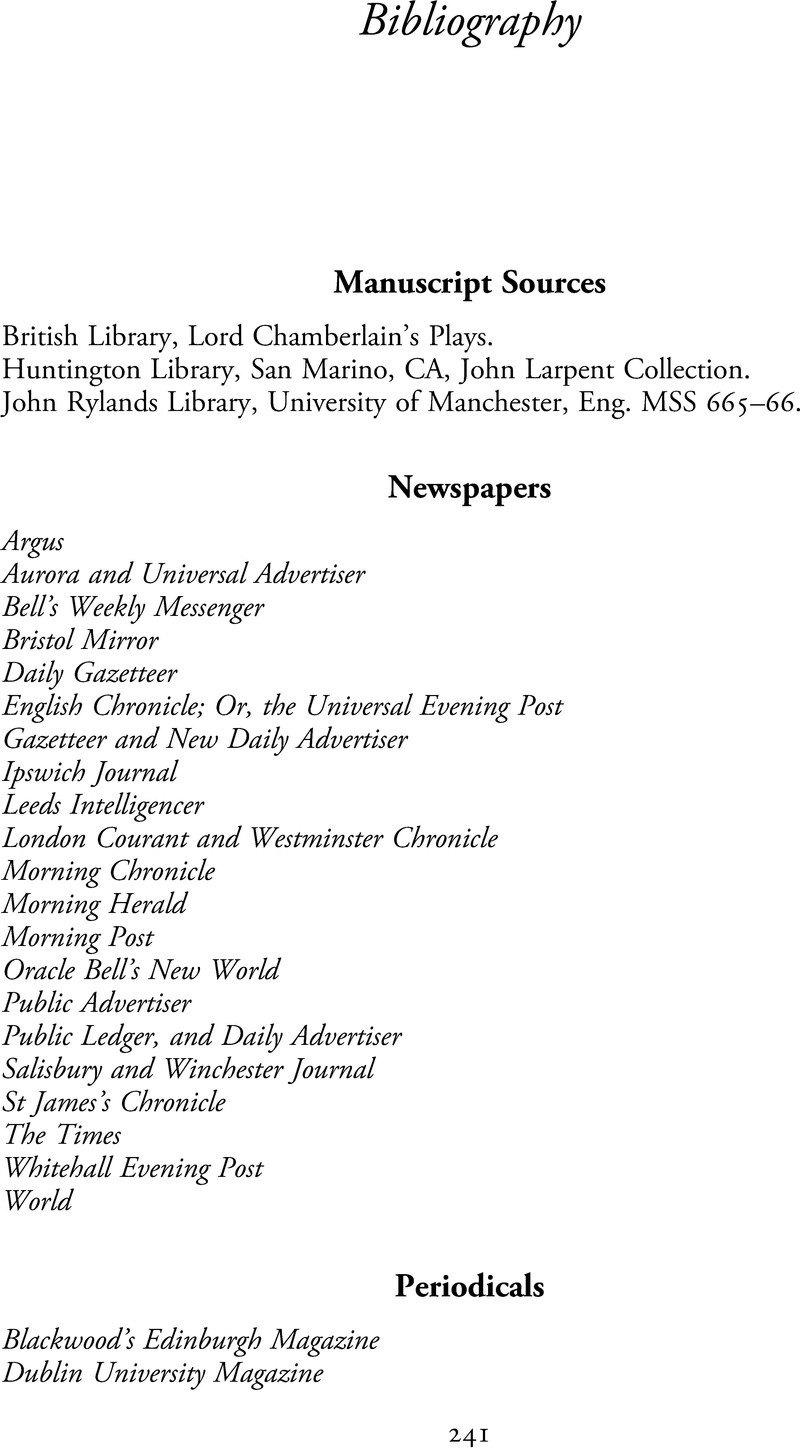Bibliography
Published online by Cambridge University Press: 03 August 2023
Summary

- Type
- Chapter
- Information
- The Censorship of Eighteenth-Century TheatrePlayhouses and Prohibition, 1737–1843, pp. 241 - 256Publisher: Cambridge University PressPrint publication year: 2023

